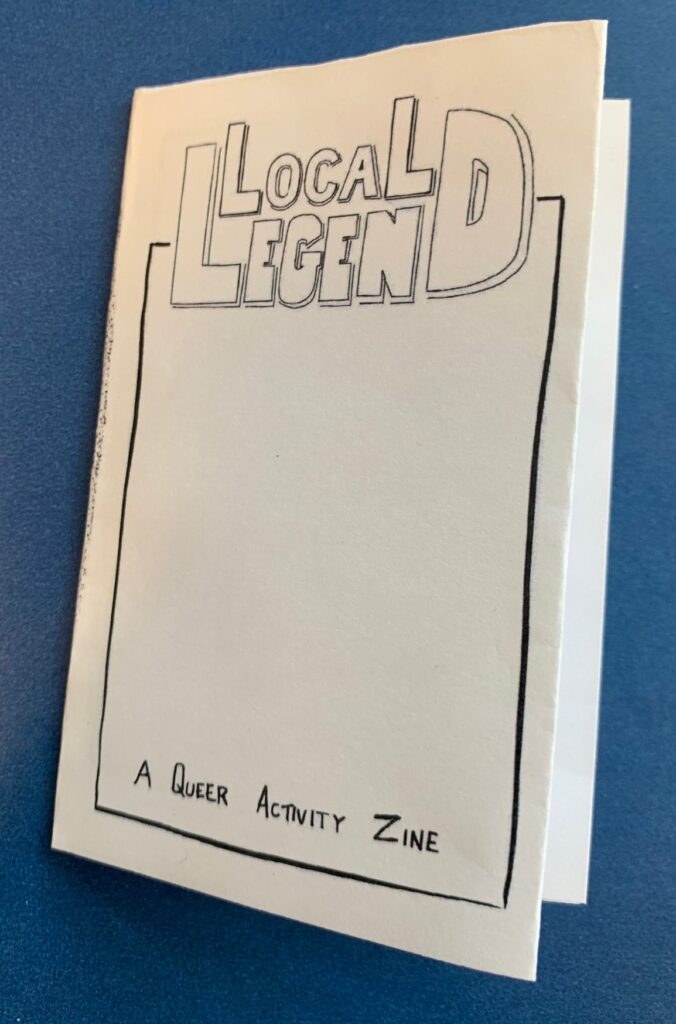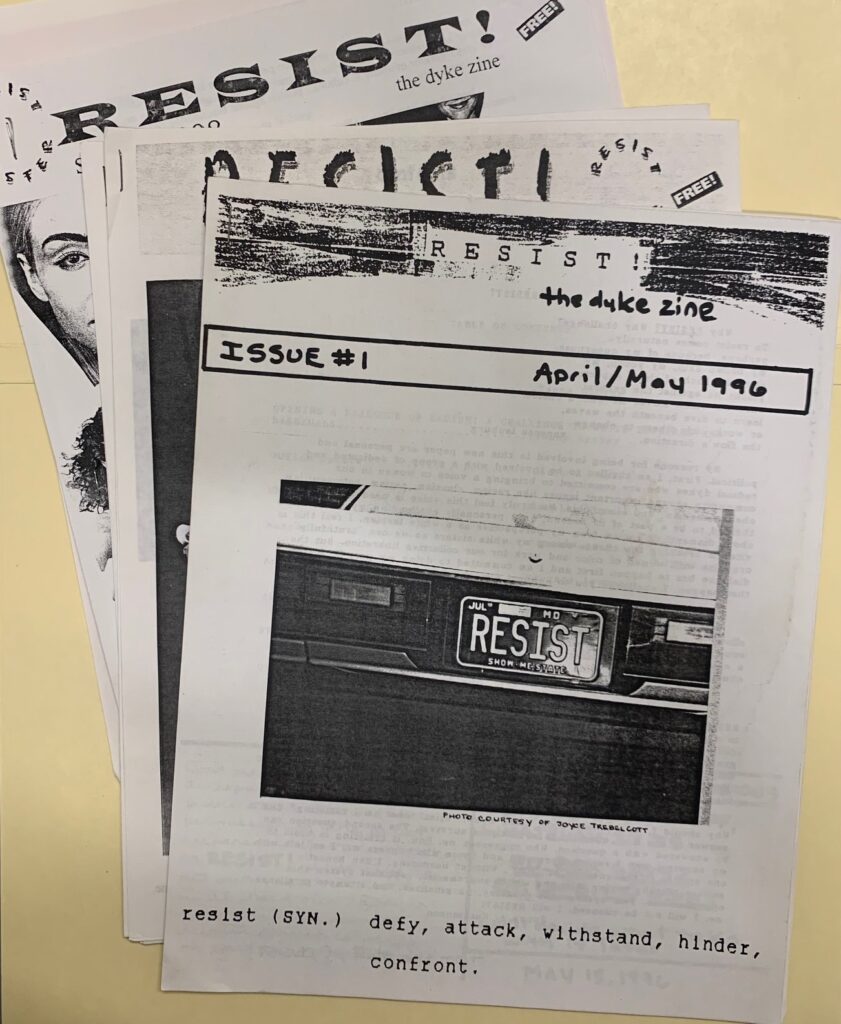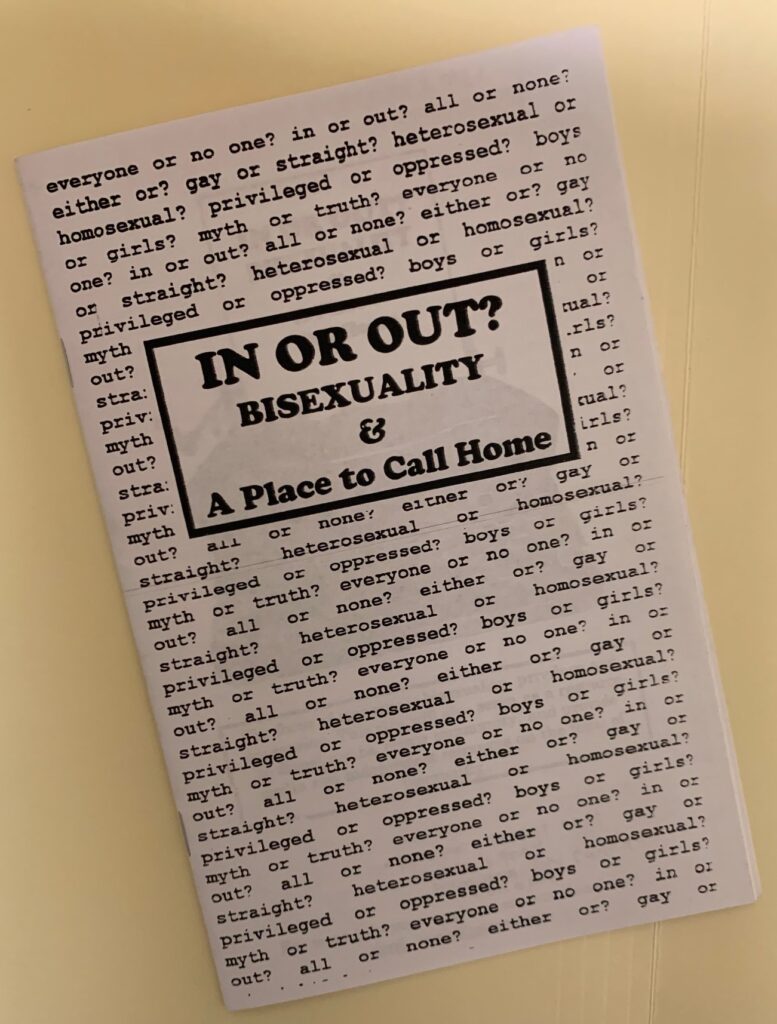
Making Zines to Honor LGBTQ History Month
Zines and Queer History
When the Spectrum office asked if I would collaborate on an LGBTQ History Month event, my first thought was zines! That is because this semester, master of fine arts–illustration and visual culture student Phoebe Santalla is working on a practicum with the Mapping LGBTQ History Project. Phoebe is leveraging her skills to illustrate important local queer stories that, at present, have only text descriptions. Too often important history is only documented through salacious newspaper accounts, police records, or dry legal documents. We hope using images will add humanity back into these stories.
Phoebe’s illustrations will eventually be shared in zine format, along with images added to the mapping project online site. Work is underway, and you can get some sneak peeks on Instagram.
In preparing for the Queer Stories: A Zine Making Workshop, cosponsored by the University Libraries and the Spectrum Office, Phoebe suggested a theme of personal storytelling. She set about making a guided template available as an option for attendees new to making zines.

“Queer history is an elusive topic…That’s why queer memory is so often passed down by word of mouth or local independent queer publications. Zines have historically been a space where queer and marginalized communities can thrive,” noted Phoebe.
What Are Zines and Why Do They Matter?
Zines come in all sizes and styles and can be folded, stapled, or sewn. While humans have been printing small booklets for decades, it was access to photocopiers starting in the 1980s that increased zine popularity. This allowed anyone to easily create and publish their work.
Most zines are by a single author, such as In or Out? Bisexuality, created in Canada by Heather / Grrl_Hawk. Others are a group effort, such as RESIST! the dyke zine published in St. Louis in the late 1990s. These and other queer zines are available to researchers in the Julian Edison Department of Special Collections. See below for more information.


With longstanding (and ongoing) discrimination in our society against LGBTQ folks, zines provide an important forum for personal expression, sharing ideas, and celebrating creativity.
As stated by gender scholar Alison Piepmeier, in her article, Why Zines Matter, “In an age of electronic media, when the future of the book itself is often called into question, and when the visual and textual landscape is dominated by an increasingly voracious culture industry, zines—paper documents, usually made by hand, without any financial incentive—endure. Zines are quirky, individualized booklets filled with diatribes, reworkings of pop culture iconography, and all variety of personal and political narratives.”
Zines are found in several collections at the Julian Edison Department of Special Collections, including the Laura Ann Moore Papers and the St. Louis LGBTQ+ Research Collection.
We hope you can join us on October 11, 2023, to celebrate LGBTQ History Month by making a zine and filling it with your narrative. Please register for the workshop.
Read More About This Topic
Kumbier, Alana. Ephemeral Material: Queering the Archive. Litwin Books, 2014. EBSCOhost
Miller, Rachel. “From the Archives: The Queer Zine Archive Project.” Inks: The Journal of the Comics Studies Society, vol. 2 no. 3, 2018, p. 369-389. Project MUSE.
Piepmeier, Alison. “Why Zines Matter: Materiality and the Creation of Embodied Community.” American Periodicals: A Journal of History & Criticism, vol. 18 no. 2, 2008, p. 213-238. Project MUSE.
